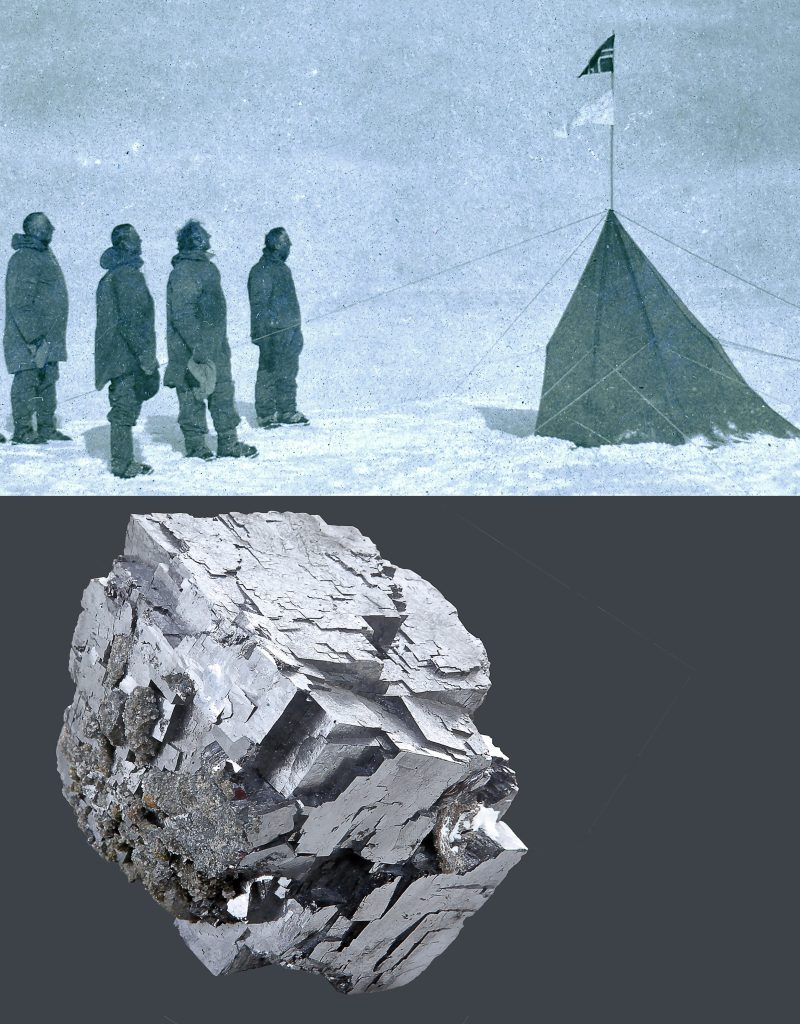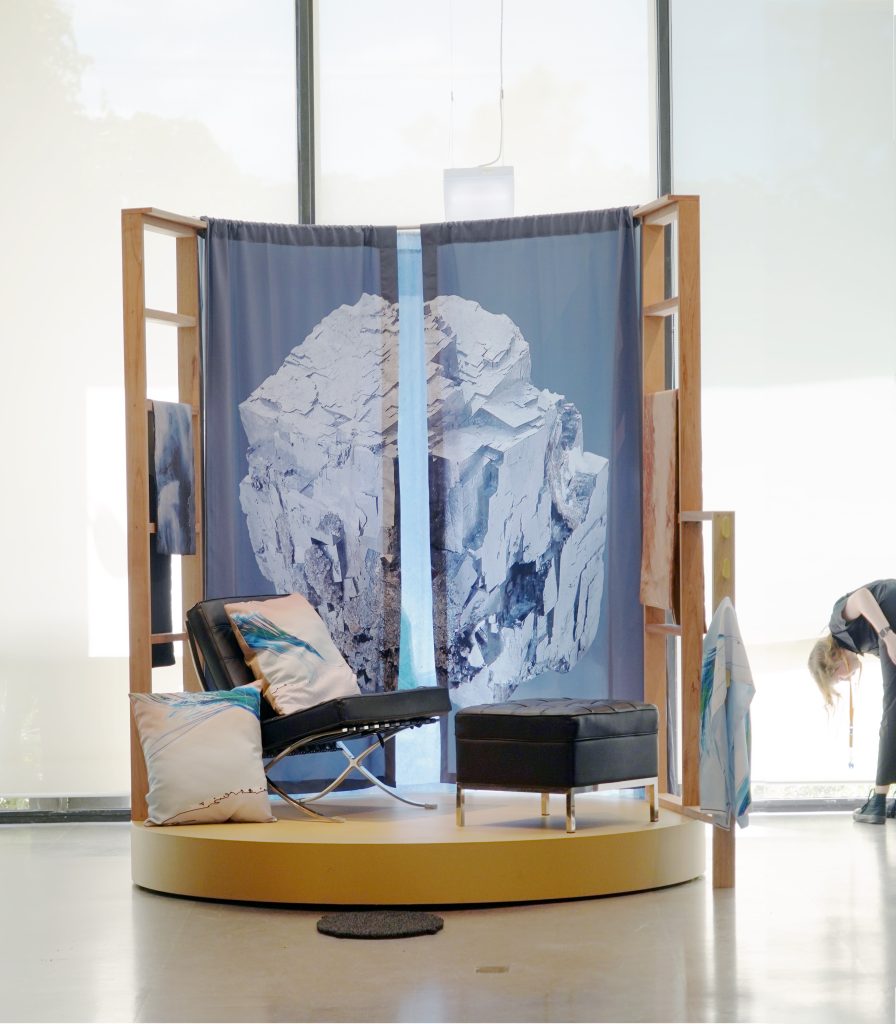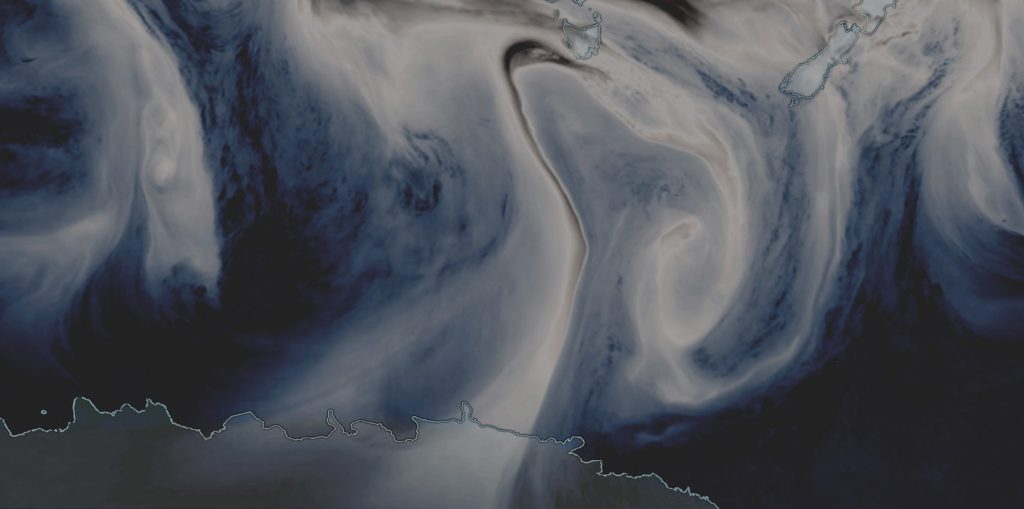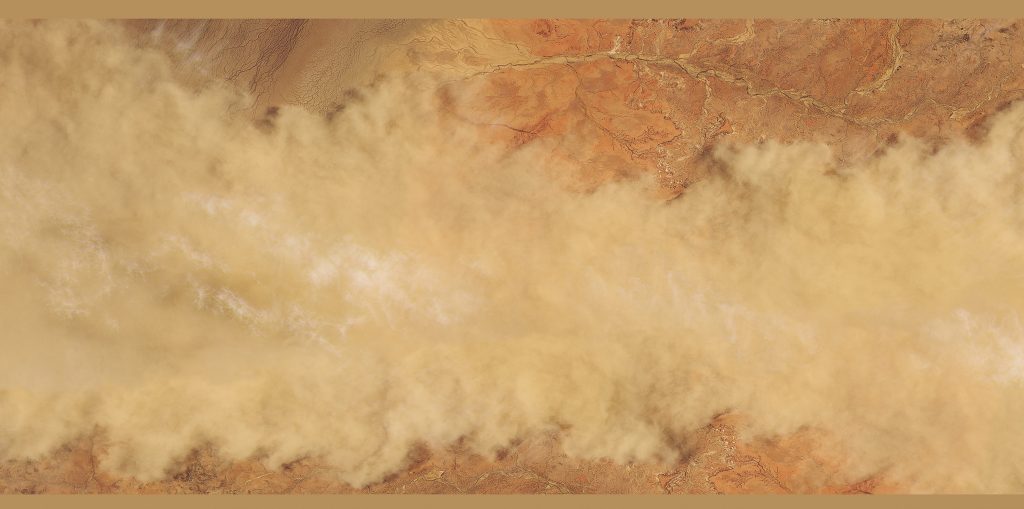Curtains for the Four River House
in Undercurrents, Penrith Regional Gallery, 3 Dec 2022 – 5 Mar 2023
Curated by Nina Stromqvist and Toby Chapman
Of climatic thresholds and atmospheric unities. Of lead from Broken Hill in ice in Antarctica. And of sky rivers
Part midcentury (like) stage set and part analogue weather station, considering watery knowledges and histories.
(Right: Video extract from documentation produced by Blue Mountains Cultural Centre)
Lead dust from mining silver in Broken Hill, Australia’s first colonial silver mine, and birthplace of international miner, BHP, was windborn in atmospheric currents and detected in icecores in the Antarctic; arriving 20 years before Scott and Amundsen raced to claim the last unterritorialised continent. We got there before we arrived.
This work considers atmospherics and thresholds, and of the indistinct zone between insides and outsides, north and south, gallery and pole. Of one water and one air across two continents and an ocean.
Operating as an analogue weather reporting station, the draped fabric photographic images are rehung in specific sites on numbered shelves, updated daily based on atmospheric metrics from the Scott Amundsen Antarctic station, to enable to weather from 1000 km away to be read in the gallery.
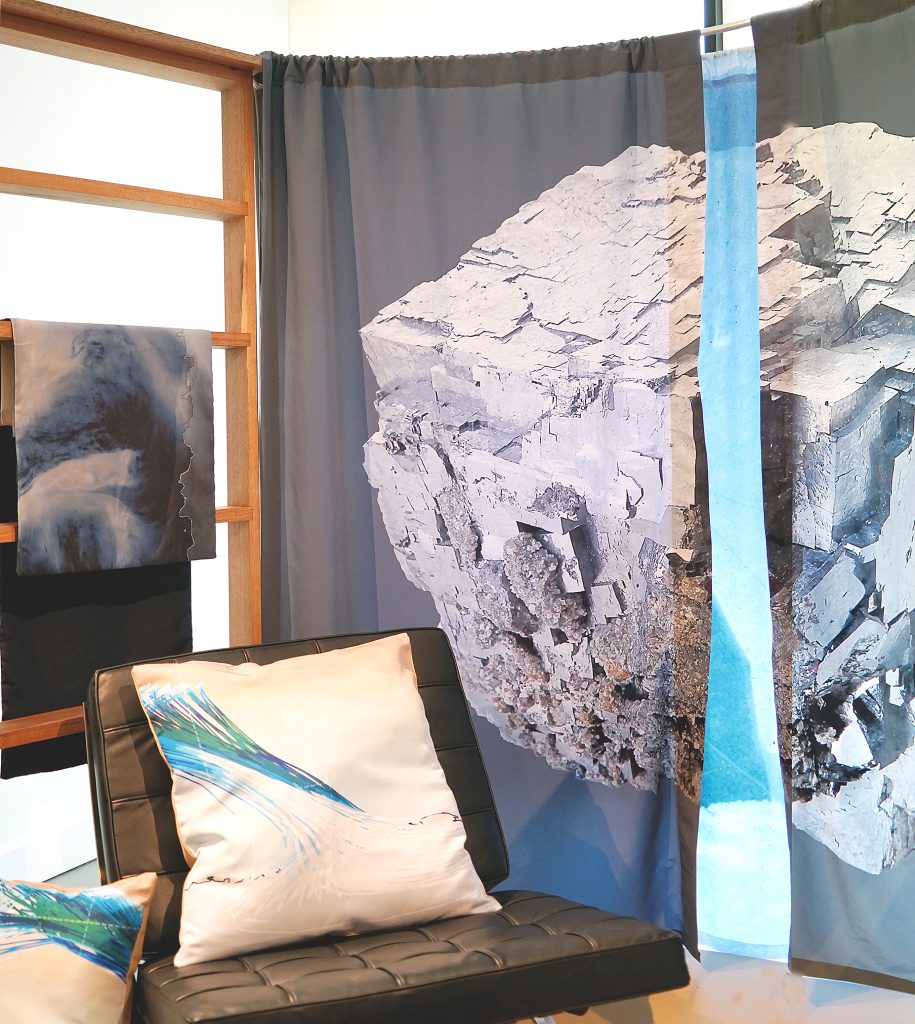
LHS Wing of the Four Rivers House: Sky river between Australia New Zealand and Antarctica
Position on the 4 horizontal rails indicates temperature at the Scott-Amundsen weather station -50 to -20 deg C.
RHS wing of the Four Rivers House: Dust river near Broken Hill, central Australia
Position on the 4 horizontal rails indicates daily wind speed, Antarctica; 0- 100 km/hr
With thanks to Dr Jean-Philippe Putard, Joint Research Centre (JRC) European Commission
Previous related work: DUMP: Essay by Annika Jaspers, senior curator, Museum of Contemporary Art.
Refs
Antarctic-wide array of high-resolution ice core records reveals pervasive lead pollution began in 1889 and persists today. Joseph R Mcconnell et al. Scientific Reports · July 2014



